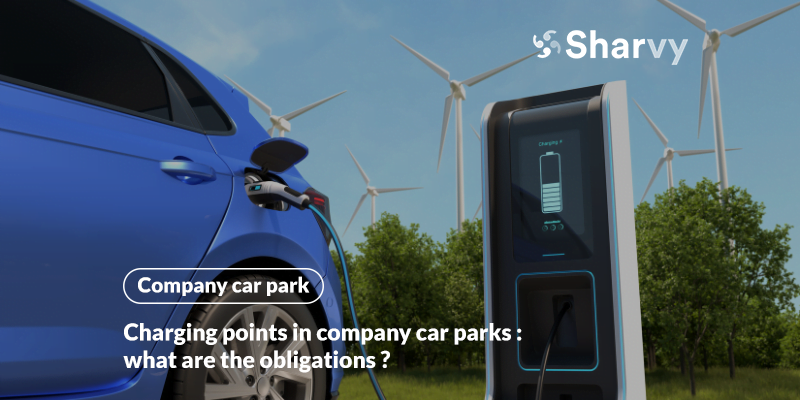As an essential corollary to electric mobility, the network of charging points is being intensified across the UK to absorb the exponential growth in sales of electric vehicles.
However, the availability and coverage of these facilities in the UK still need to be improved. Today, although motorway service areas are equipped, this recharging accounts for only 10% of usage, while 90% of recharging occurs at home or in the workplace!
As a result, businesses have a crucial role in encouraging the transition to electric mobility and, clearly, in making up for the delays of recent years.
So, to make a historic shift, the United Kingdom is arming itself with a robust legislative arsenal, with a dual focus on bans (Introduction of Ultra Low Emission Zones – ULEZ) and incentives (financial support for the purchase of an electric vehicle).
However, laws change rapidly due to the latest advances in usage and technology. That’s why it sometimes takes work to keep track of repealed articles, updated decrees, and application conditions. In this article, we give you an overview of the obligations incumbent on companies and our (best) advice on how to take the plunge and offer this benefit to your employees.
The challenges of installing charging points in company car parks!
For years, the government has pressured companies to opt for greener solutions for their vehicle fleets.
One example is the obligation to convert a percentage of combustion vehicles to electric power when renewing company fleets yearly. This percentage will rise gradually from 10% in 2023 to 70% in 2030! So as you know, this obligation only applies to companies with more than 100 vehicles.
At the same time, employees and trade unions are putting pressure on companies to install recharging points in their car parks. This is now an essential investment, providing support and comfort for employees and visitors alike in their choice of mobility.
The reason is that the constraints associated with battery autonomy may hold back this electric boom since the existing recharging facilities still need to be sufficiently developed. That’s why companies must now make it a point of honor to create electric charging points in their car parks.
Take the example of a large company that has recently undertaken to equip its parking lot with electric vehicle charging points. In accordance with current regulations, this company has installed charging points in anticipation of the 2025 requirement, which mandates a charging point for every twenty spaces.
This initiative has not only met the growing needs of its employees but has also enhanced the company’s image as a committed player in the energy transition.
Thanks to this installation, employees can now recharge their vehicles at their workplace, which improves their quality of life at work and encourages the adoption of electric vehicles within the company.
Ultimately, the company will gradually establish itself as a critical player in the transition to electric mobility in the UK by becoming a fully-fledged recharging point where employees, customers, and visitors alike can recharge their electric and plug-in hybrid vehicles during the day. In 2023, there were over 452,000 registrations of these types of vehicles, representing a 41% increase compared to 2022.
The regulatory context : what are the requirements for electric charging points in company car parks in the UK?
From 1er June 2022, all new non-residential buildings with more than ten parking spaces must have at least one charging point and cable trays for one in five (20%) of the total spaces.
At the same time, all non-residential buildings undergoing major renovation with more than ten parking spaces must also have at least one charging point and cable trays for one in five spaces.
This new obligation supports the British government’s desire to speed up the energy transition and ban the sale of new combustion-powered vehicles from 2030. The government hopes to install 300,000 public charging points for electric vehicles by 2030, supported by a £1.6 billion investment plan, including the Local Electric Vehicle Infrastructure (LEVI) fund of £450 million to finance innovative on-street charging projects.
To cover the cost of supplying and installing their charging points, businesses can apply to the government’s Workplace Charging Scheme. This voucher scheme covers up to 75% of the total cost of purchase and installation (including VAT), up to a maximum of £350 per socket or 40 sockets across all sites per applicant.
5 tips to remember before installing charging points in your car park!
1. Analyse your vehicle fleet and the way your employees use it.
There are a large number of criteria that need to be taken into account when choosing a set of charging points. It depends on your company’s needs and constraints, the existing electrical installation, and the vehicles to be recharged.
Knowing the size and make-up of your car fleet is an excellent place to start.
For example, reinforced plugs (3.7kW) are economical but more suitable for small fleets of plug-in hybrid vehicles. This is because plug-in hybrids can only be recharged at low power (from 3.7 kW to 11 kW).
So, if your vehicle fleet consists solely of plug-in hybrids, you decide to install 22kW charging stations with an average energy cost of €0.352/kWh. Unfortunately, you’d be paying for power that your fleet of vehicles can’t handle. Knowing your fleet and its cars is essential to choosing your charging points wisely.
At the same time, understanding how your employees use their vehicles is essential if you are to choose the most suitable charging stations in terms of power. An employee who spends all day at work and only uses their vehicle for home-to-work journeys will have a different usage pattern to an itinerant employee (e.g., a salesperson) who makes many return journeys from work.
That’s why variables such as vehicle turnover and teleworking policy need to be considered before making your choice, as they will impact the choice and number of charging points in your company car park.
2. Identify the types of recharging points and opt for the right wattage.
Before deciding how much power to allocate to your set of charging points, it’s essential to consider some parameters.
Firstly, as we saw earlier, you need to analyze your vehicle fleet and how your employees use it. On the other hand, it is also essential to identify the different types of charging points because, depending on your choice, this will impact the recharging times for your fleet of vehicles. Today, the main distinctions are :
- AC (Alternating Current) charging points : can deliver between 3.7kW and 22kW maximum. The range recovered (per hour) varies according to power. A 3.7kW charging point can recover between 15km and 20km. A 7.4kW charging point recovers between 30km and 40km. An 11kW terminal will heal between 60km and 70km, and a 22kW terminal between 100km and 150km.
- DC (Direct Current) recharging stations : these recharging stations can reach power thresholds of between 50kW and 400kW. They are designed for mobile workers (salespeople, technicians, etc.) who must to recharge in less than an hour. However, this type of charging point is more common in motorway service areas. They are not recommended for company car parks.
For a company car park, we recommend staying with a standard charging point (between 7.4 kW and 22 kW). This type of power means that electric vehicles can be recharged evenly throughout the working day. For example, a 7kW charging point can recover 30km to 40km, and it takes 8 hours to recharge the vehicle entirely.
As a result, these charging points are more suited to the needs of a business.
3. Anticipate changes in your company’s electrical recharging needs.
There’s no doubt about it : full adoption of electric vehicles is impossible due to a lack of sufficient electrical infrastructure in the UK. 53% of public charging points in the UK offer power between 7kW and 22kW, while there is a trend towards increasing the availability of fast chargers (50kW and above) to meet the demand for quicker and more efficient recharges. However, given the development of support schemes and the dynamic sales of electric cars in the future, strategies for deploying charging points are being stepped up, particularly in businesses.
At the same time, British employees who own an electric vehicle expect to have access to a charging point in the workplace. As of April 2024, there are 1.7 million electric and plug-in hybrid vehicles on the roads in the UK, including 1.1 million fully electric vehicles and 655,000 plug-in hybrids.
That’s why companies must now make it a point of honor to develop electric charging points in their car parks. Not only to fulfill a strategic objective during a recruitment drive (since the presence of recharging points in a company’s car park makes it more attractive to applicants). But also to improve your company’s employee experience, Quality of Life, and Working Conditions (QLWC).
As a result, businesses need to anticipate future needs in terms of electric recharging. According to future estimates, UK sales of electric vehicles are increasing by 70% annually!
Given these estimates and the advantages of having some charging points in a company car park, it is in the company’s interest to speed up installation.
4. Integrate a monitoring system for your charging stations.
Installing charging points for electric vehicles in company car parks redefines employee habits. These facilities give companies a greater sense of responsibility, as they must ensure that employees can take full advantage of this service without malfunctions!
That’s why it’s essential to adopt good practices.
For example, offering your employees a genuine booking interface is a good idea to ensure that everyone has access to a charging point for electric vehicles and plug-in hybrids. The Sharvy application can be your right hand in this process.
Via Sharvy, your employees can plan their days on-site by declaring their presence & reserving and/or freeing a parking space equipped with a recharging point. At the same time, they can start and stop recharging (remotely) from the application and benefit from real-time monitoring of the power and energy recharged (kW).
What’s more, Sharvy provides administrators with a list of changes made per day, details of charges (duration, energy supplied, and kWh, users), and an Excel export of the data. In this way, you and your fleet manager can (easily) monitor the use of the charging points and obtain various data to facilitate pricing.
5. Determine the price of electricity consumed by your employees.
You can make the charging points in your car park available to your employees free of charge. In this case, you won’t get any money back. However, you will enjoy many intangible benefits (improved employee experience & employer brand, optimization of your CSR policy, etc).
If, however, you wish to charge your employees for recharging, it is essential to define your billing model. This can be by the hour, by the kWh, or on a flat-rate basis. Each model has its advantages and disadvantages. Here are some of our tips.
- Time-based invoicing : this model is attractive for companies with a limited number of recharging points about the number of employees. It encourages your staff to vacate the charging point more quickly once the charge has been completed. On the other hand, this model is the least equitable (because of the different models of your employees’ vehicles). Vehicles that take longer to recharge (plug-in hybrids) are penalized.
- Billing per kWh : this is the fairest model for all your employees. What’s more, it’s suitable for all types of company. It also offers greater transparency for the fleet manager, who can quickly assess the financial added value of each charging point about the energy costs. However, unlike time-based invoicing, this model does not encourage your employees to vacate the space quickly.
- Flat-rate billing : in this case, you need to set a fixed price for a top-up. You can charge the fee arbitrarily (for example, by offering your employees a monthly subscription). However, this model is unrelated to actual consumption and needs to consider the days your employees are absent (holidays, teleworking, and travel).
In conclusion
There’s no doubt that businesses have a crucial role in encouraging the transition to electric mobility. That’s why, in the UK, a government-driven revolution is underway to equip company car parks with charging stations for electric and plug-in hybrid vehicles.
However, installing and operating charging infrastructure for electric vehicles (IRVE) is a complex project, requiring the involvement of many stakeholders to bring it to a successful conclusion.
That’s why it’s essential to consider the project as a whole and anticipate developments in the electric vehicle market and future regulations right from the design stage. This means that companies need support in sizing up and responding as effectively as possible to the growing needs raised by electric mobility. This is where Sharvy, the leader in managing and optimizing company car parks, can help. Do not hesitate to contact us to present your project and benefit from the advice of our experts!
A question? Check the following FAQ!
What criteria should you bear in mind when deciding which obligations to meet?
As an employer, it’s essential to consider various criteria when identifying your obligations. Here’s what you need to know :
- The date of the last planning permission for the building associated with the car park.
- The size of the car park (number of spaces).
- The number of inhabitants in the urban area to which the car park belongs.
Is there any financial support available for installing charging points on company premises?
The Workplace Charging Scheme is designed to encourage companies to install electric charging points in their car parks.
However, the contribution is limited to 75%, or £350 per socket, of these costs, up to a limit of 40 sockets per company. These can be found on various sites.
If, for example, an organization has initially requested support for ten plugs, it may subsequently request further funding vouchers, provided that the total bid is at most 40.
However, all the installations included on the same voucher must be the subject of a single claim: once used, a voucher cannot be reused even if the number of sockets installed is less than indicated.
What factors should a company consider when installing charging stations in its car park?
Want to learn more? Check out latest articles!
What is the real cost of an EVSE in a company car park?
Are you thinking of installing charging points in your company car park? But how much does an EVSE installation cost? Focus!
10 inequalities observed in company car parks!
What inequalities can be observed in company car parks? What impact do they have? What can be done about them? Find the answers here!
Need more parking spaces at work? 6 solutions to consider!
Are you short of parking spaces at work? Do you need internal and external solutions? How do you go about it? Here are our ideas!
Subscribe to our newsletter!
Resources
Contact us
+44 117 463 6990





